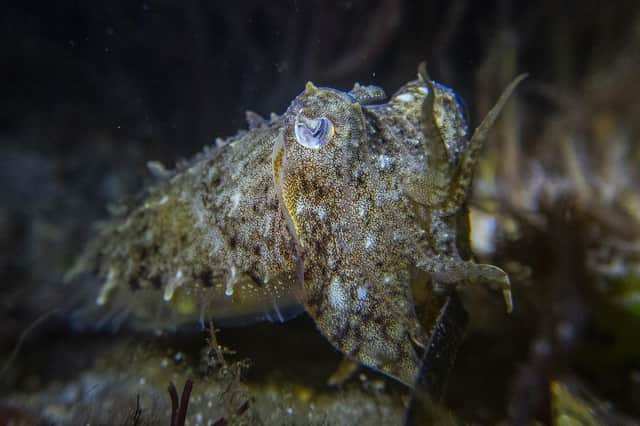Wightlink and University of Portsmouth team up to discover more about ‘iconic’ Solent area sea species


University of Portsmouth postgraduate researcher Emma Chappell has installed strands of rope, weighted down by breeze blocks, into the seawater beneath two port structures – Portsmouth Harbour, near the ferry company’s FastCat terminal, and Ryde Pier.
She is hoping cuttlefish will be encouraged to lay their eggs on the ropes and will be visiting the sites monthly to check on the six nurseries.
Advertisement
Hide AdAdvertisement
Hide AdCuttlefish are part of the same family of marine invertebrates as squid and octopuses and can change colour and texture to escape predators or attract mates.
Their chalky internal shells can often be found washed up on beaches and are often used in budgie cages, as a calcium-rich dietary supplement for the birds.
Many Wightlink staff remember seeing hundreds of cuttlefish in and around Portsmouth Harbour in years gone by, but numbers have fallen recently.
‘Cuttlefish are an iconic and important species in the Solent,’ Emma commented. ‘Despite this, they don’t receive as much protection as other commercially valuable species found in the Channel and coastal stocks are exploited, often by offshore trawlers.
Advertisement
Hide AdAdvertisement
Hide Ad‘In 2018, this was the fifth most valuable fishery in England, worth £14.9 million.
‘The results of my research will help increase our knowledge about cuttlefish egg-laying behaviour on artificial structures, which could be helpful in decision-making about the management of cuttlefish in our waters.’
Wightlink Chief Executive Keith Greenfield added: ‘We are always delighted to work with University of Portsmouth marine scientists to learn more about life beneath the waves. We look forward to hearing updates on Emma’s valuable research.’